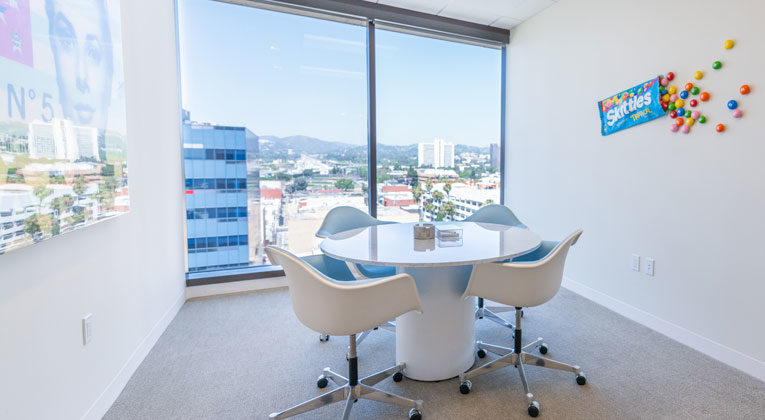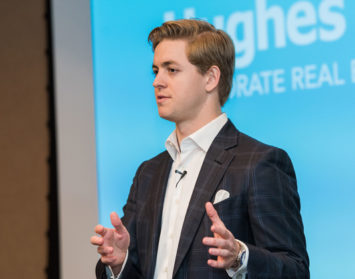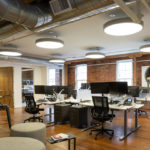By the Hughes Marino Marketing Team & Kristin Christensen
At Hughes Marino, we believe office design and company culture truly work hand in hand to inspire teams, and have the ability to positively impact businesses in many ways. Our Planning + Design team works to shape the perfect functioning workspace for clients’ teams in order to enhance space and productivity, and plays a major part in helping companies adapt to the ever-changing world we are living in.
We recently sat down with Kristin Christensen, Interior Design Director for our Planning + Design team, and discussed some commonly asked questions by many company owners and business leaders this year.
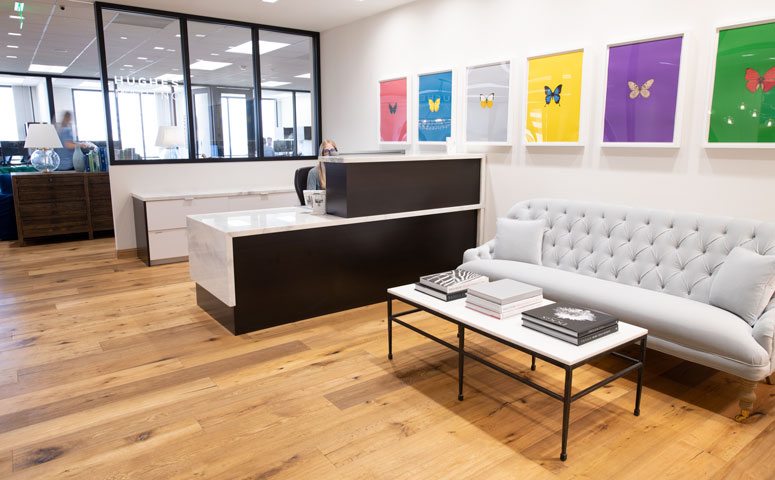
Q: What do you think are the most important elements in office design?
A: As you enter the front door of any company, a welcoming reception area is extremely important in creating the best arrival experience for teams and an excellent first impression for clients and potential new hires. Whether or not a team member is there to greet you, companies should consider the feel, view, furniture or way-finding signage prompts for their guests to ensure a positive experience and first impression.
The second element that is vital in office design is lighting. While natural light is ideal, any well-placed and well-designed lighting can really have a tremendous impact aesthetically. A well lit work area is not only functional, but also serves as a key element to promote an airy feel to the space.
Number three on our list is glass, which is an important factor for showcasing natural light. Glass office fronts brighten and liven up the space as well as help bring the outdoors in.
Another important element in office design is the use of collaboration spaces, which foster innovation when people come together for small meetings or provide a reenergizing extension of home at the office. We encourage larger companies to have multiple collaboration zones, both indoor and outdoor, if possible. This synergy of a collaborative workspace developed correctly can inspire team members and provide an environment for productive engagement and promote creativity.

Q: The conference room. What meeting space changes or evolution have you seen?
A: We’re seeing a lot of companies shift their floor plans to accommodate more 4-6 person meeting rooms, rather than having an abundance of medium-to-large conference rooms. Open plan all-hands spaces are also a frequent ask along with the popular trend of “Zoom Rooms”—technology-enabled spaces designed to make all team members (or clients) feel included, no matter where they are working. Well-designed Zoom Rooms often feature a U-shaped furniture configuration that allows everyone seated in the room to face the individuals onscreen via video on a large screen or TV.
Q: What office innovations have occurred or grown in popularity due to COVID?
A: All of the changes we are seeing—and helping with—place the health and comfort of teammates at the forefront. This includes creating “cozy collab” spaces, providing ample space for physical distancing, re-arranging furniture groupings, shifting to smaller tech-enabled meeting rooms, moving away from benching workstations, and using existing spaces in a different way. Two of the big factors I would say are seated privacy and more glass partitions on workstations.
Another innovation we are seeing is the exercise and policy of split schedules for employees with open plan offices. Split schedules have a partial team working three days per week in the office, with the remaining team members working the opposite two days. We also assist our clients by providing physical distancing roadmaps that designate single point of entry and exit, socially distanced path of travel throughout the space, split schedule seating assignments (i.e. shift A, shift B), and maximum room occupants for enclosed spaces. All designed to promote flexibility and safety in the workplace.
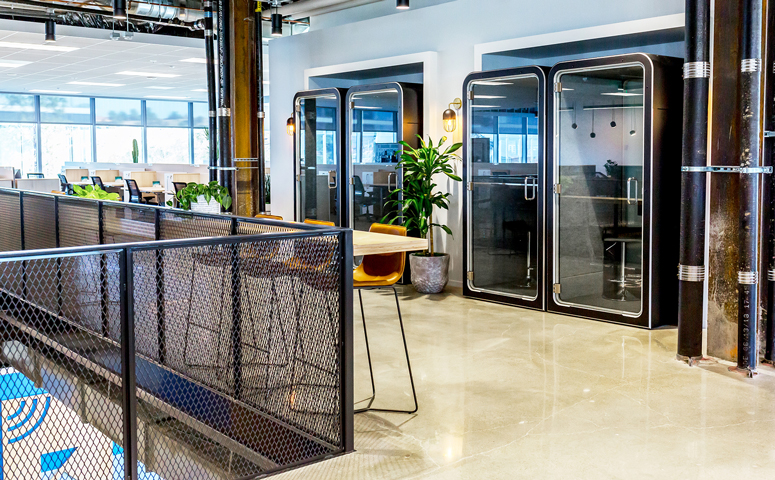
Q: Can you tell us about a few of your favorite projects from the last two years?
A: I don’t really have a favorite per se because all of the projects we work on are really amazing, but there are a couple that come to mind. One recent project was for a financial tech company in Los Angeles, where we handled the interior design and furniture scope. The project started in late 2019 and wrapped up mid-pandemic. The furniture installed in August 2020, featuring open plan benching workstations, had to be modified with custom screens for employee separation.
Another project was for a technology company—where we executed the furniture design of their 45,000 square foot space. Complete with modern furnishings, Zoom Rooms and lush greenery, this headquarters is a dream hub for any professional.

Q: How do you promote future proofing your client’s spaces?
A: We like to plan ahead by first deploying a Needs Assessment to help our clients quantify how much space they truly need. We also recommend surveying the employees on what they would like to see and what would help them to ease back in to working in the office. If time and budget permits, we recommend setting up different furniture vignettes to test-fit the space with various options and gather feedback from employees as well. Planning ahead is crucial as we are seeing some furniture delays of up to 10 to 12 weeks; prior to the pandemic, furniture deliveries typically took no more than 6 to 8 weeks. Another point we stress to our clients: don’t do anything drastic. In this ever-changing world, we encourage companies to take small steps as guidelines and trends are constantly shifting. By making small adjustments, you are able to future proof your space.
In the end, all of the elements that comprise a space are critically important, but the true measure of the effectiveness and energy of a workspace is the setting and mood it conveys, and the narrative of the aesthetic. Our team is honored to create spaces and see the transformative impact functional spaces can have on our clients, their employees, and their talent acquisition to promote future growth and their company’s culture.
Kristin Christensen is interior design director at Hughes Marino, a global corporate real estate advisory firm that exclusively represents tenants and buyers. Contact Kristin at 1-844-662-6635 or kristin.christensen@hughesmarino.com to learn more.

